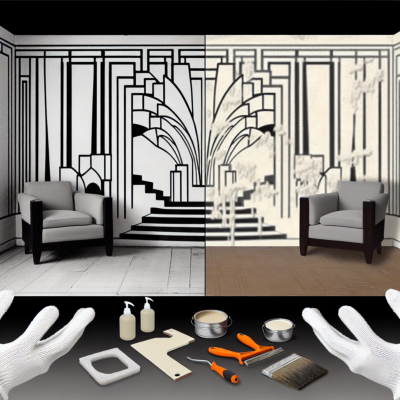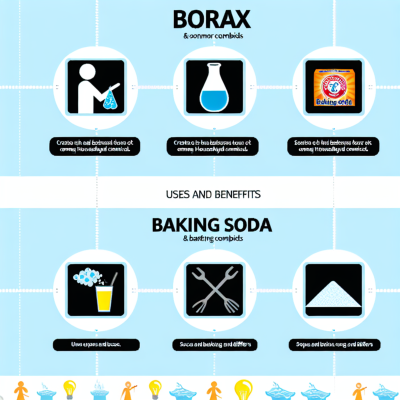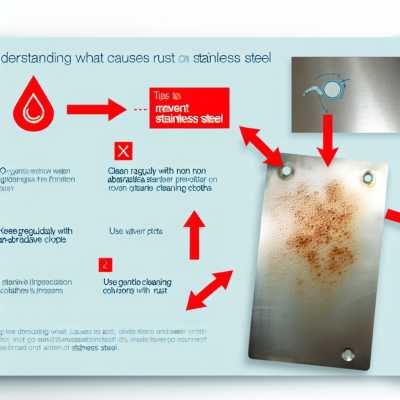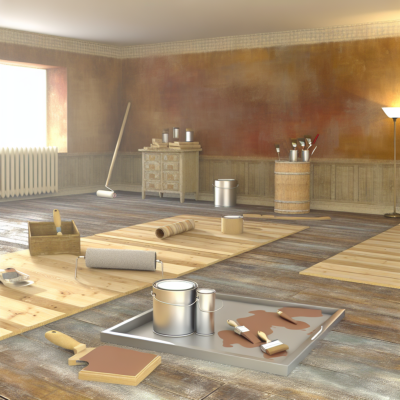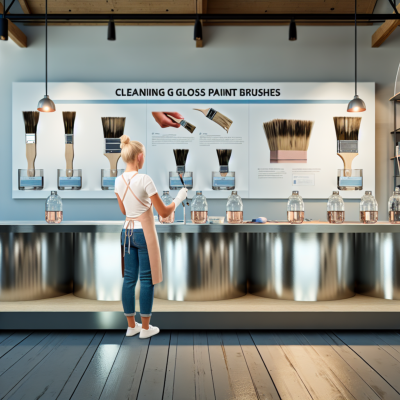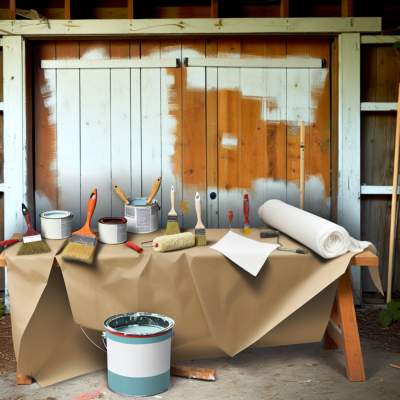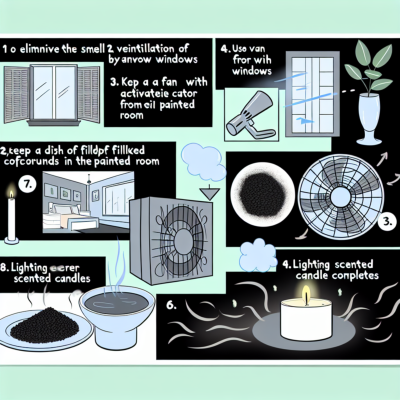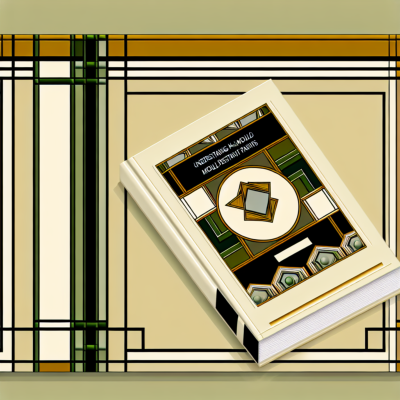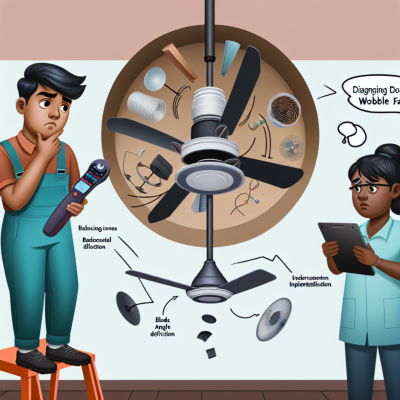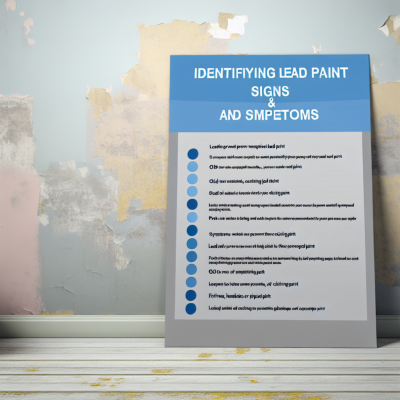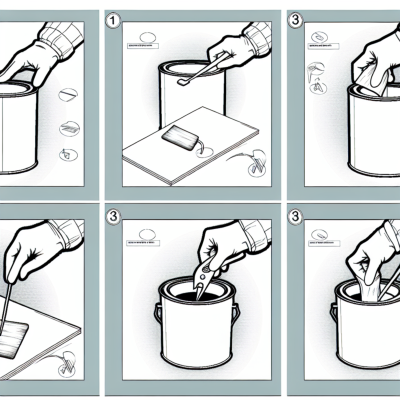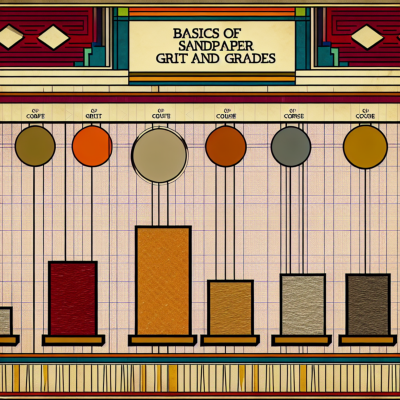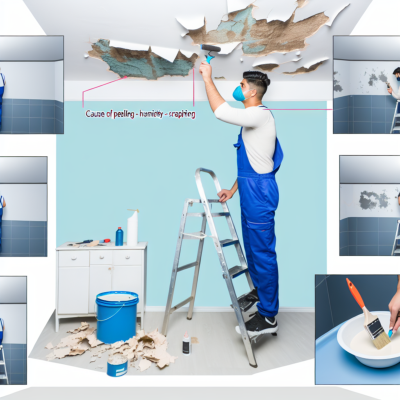Keeping your car and household rugs clean is essential for maintaining a healthy and hygienic environment. Over time, rugs can accumulate dirt, dust, stains, and odors, which not only affect their appearance but also pose a risk to your health. Regular cleaning is necessary to remove these contaminants and prolong the life of your rugs.
When it comes to cleaning car and household rugs, it's important to use effective techniques that will get the job done properly. Whether you're dealing with a small area rug in your living room or the floor mats in your car, there are several tried and tested methods that can help you achieve a thorough and efficient clean.
One of the most common techniques for cleaning rugs is vacuuming. Regular vacuuming helps to remove loose dirt and debris from the surface of the rug, preventing it from embedding deeper into the fibers. It's important to use a vacuum cleaner with a brush attachment to agitate the fibers and loosen any dirt that may be trapped. For car rugs, consider using a handheld vacuum or a small brush to reach into tight spaces.
In addition to vacuuming, spot cleaning is another effective method for tackling stains and spills on rugs. Whether it's a coffee stain on your living room rug or a muddy footprint on your car mat, acting quickly is crucial to prevent the stain from setting. Blot the stain with a clean cloth or paper towel to absorb as much liquid as possible, then apply a small amount of mild detergent or carpet cleaner and gently scrub the area with a soft brush. Rinse with clean water and blot dry.
Basics of Cleaning Car Rugs and Carpets
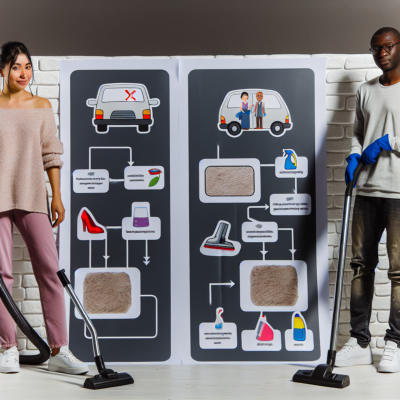
Car rugs and carpets can accumulate dirt, dust, and stains over time, making them look dull and dirty. Regular cleaning is essential to maintain their appearance and prolong their lifespan. Here are some basic cleaning techniques to keep your car rugs and carpets looking fresh and clean:
1. Vacuuming:
Start by removing loose dirt and debris from the car rugs and carpets using a vacuum cleaner. Use a brush attachment to agitate the fibers and loosen any embedded dirt. Vacuum all areas thoroughly, including the crevices and corners.
2. Pre-treating stains:
If you notice any stains on the car rugs or carpets, it's important to pre-treat them before the actual cleaning process. Use a stain remover or a mixture of mild detergent and warm water to gently dab and blot the stains. Avoid scrubbing, as it may damage the fibers.
3. Shampooing:
After pre-treating the stains, apply a carpet shampoo specifically designed for car rugs and carpets. Follow the instructions on the product label and use a soft-bristle brush or sponge to work the shampoo into the fibers. Rinse thoroughly with clean water and remove excess moisture using a wet-dry vacuum or a clean towel.
4. Drying:
It's important to dry the car rugs and carpets thoroughly to prevent mold and mildew growth. Leave the car doors and windows open, or use a fan to improve air circulation. Avoid direct sunlight, as it may cause discoloration. Once the rugs and carpets are completely dry, vacuum once again to fluff up the fibers.
5. Preventive measures:
To maintain the cleanliness of your car rugs and carpets, it's important to take preventive measures. Use floor mats to protect the carpets from dirt and stains. Regularly vacuum the mats and shake off any loose debris. Avoid eating or drinking inside the car to minimize the risk of spills and stains.
By following these basic cleaning techniques, you can keep your car rugs and carpets looking pristine and extend their lifespan. Remember to always read and follow the instructions provided by the manufacturers of the cleaning products you use.
What is the best thing to clean car carpet with?
When it comes to cleaning car carpets, it's important to use the right products and techniques to ensure effective results without damaging the carpet. Here are some of the best things you can use to clean car carpet:
- Vacuum cleaner: Start by thoroughly vacuuming the car carpet to remove loose dirt, dust, and debris. This will help prepare the carpet for a deeper clean.
- Carpet cleaner solution: Look for a carpet cleaner solution specifically designed for automotive use. These products are formulated to effectively remove stains, odors, and dirt from car carpets without leaving any residue.
- Soft-bristle brush or sponge: Use a soft-bristle brush or sponge to gently scrub the carpet cleaner solution into the carpet fibers. This will help loosen and lift any embedded dirt or stains.
- Microfiber cloth or towel: After scrubbing, use a microfiber cloth or towel to blot the carpet and absorb any excess moisture and cleaning solution. This will help prevent the carpet from becoming overly wet and promote faster drying.
- Water: In some cases, water alone may be sufficient to clean minor stains and spills on car carpets. Use a clean cloth or sponge dampened with water to gently blot the affected area.
Remember to always test any cleaning product or solution on a small, inconspicuous area of the car carpet before applying it to the entire carpet. This will help ensure that the product doesn't cause any discoloration or damage. Additionally, it's important to follow the manufacturer's instructions for any cleaning products or equipment used on car carpets.
By using the right products and techniques, you can effectively clean your car carpet and keep it looking fresh and well-maintained.
laundry detergent substitute
How can I clean my car seats and carpets?
Keeping your car seats and carpets clean is essential for maintaining a fresh and comfortable interior. Here are some effective cleaning techniques to help you achieve that:
- Start by vacuuming the seats and carpets to remove any loose dirt and debris. Use a vacuum cleaner with a brush attachment to agitate the fibers and dislodge any trapped particles.
- If there are any stains on the seats or carpets, treat them as soon as possible. Blot the stain with a clean cloth or paper towel to absorb any excess liquid. Then, apply a suitable stain remover or upholstery cleaner according to the product instructions. Gently scrub the area with a soft brush or sponge, and then blot again to remove the cleaner and stain.
- For fabric seats and carpets, you can also use a mixture of mild detergent and warm water. Dip a clean cloth or sponge into the soapy water, wring out the excess, and then gently scrub the affected areas. Rinse with clean water and blot dry.
- Leather seats require special care. Use a leather cleaner and conditioner specifically designed for automotive use. Apply the cleaner to a soft cloth and gently clean the seats, paying attention to any stains or dirt. After cleaning, apply the conditioner to moisturize and protect the leather.
- Once you have cleaned the seats and carpets, make sure to thoroughly dry them. Use a clean towel or cloth to absorb as much moisture as possible. Leave the windows open or use a fan to aid in the drying process. Avoid direct sunlight, as it can cause fading or damage to the upholstery.
Regular cleaning and maintenance will help extend the lifespan of your car seats and carpets, keeping them looking and smelling fresh for years to come.
How do you clean spilled car carpet?
Spilling something on your car carpet can be frustrating, but with the right cleaning techniques, you can easily remove the stain and restore the carpet's appearance. Here are some steps to clean spilled car carpet:
- Act quickly: As soon as you notice a spill on your car carpet, it's important to act fast. The longer the spill sits, the harder it will be to remove the stain.
- Blot the spill: Use a clean cloth or paper towel to blot the spill gently. Avoid rubbing the spill, as this can push the stain deeper into the carpet fibers.
- Remove solid debris: If the spill contains solid debris, such as food crumbs or dirt, use a vacuum or a brush to remove them before treating the stain.
- Choose a cleaning solution: Depending on the type of spill, you can use different cleaning solutions. For example, for food or beverage spills, a mixture of mild dish soap and water can be effective. For oil or grease stains, you can use a specialized carpet stain remover.
- Test the cleaning solution: Before applying the cleaning solution to the entire stained area, it's important to test it on a small, inconspicuous area of the carpet to ensure it doesn't cause any discoloration or damage.
- Apply the cleaning solution: Once you've tested the cleaning solution, apply it to the stained area. Use a clean cloth or sponge to gently work the solution into the carpet fibers.
- Blot the stain: After applying the cleaning solution, blot the stain with a clean cloth or paper towel. Continue blotting until the stain is lifted or no more color transfers onto the cloth.
- Rinse the area: If the cleaning solution is water-based, rinse the area with clean water to remove any residue. Blot the area with a clean cloth to remove excess moisture.
- Dry the carpet: Allow the carpet to air dry completely before using the car again. Avoid stepping on the wet carpet to prevent further staining or damage.
- Repeat if necessary: If the stain is stubborn and doesn't come out completely, you may need to repeat the cleaning process or try a different cleaning solution.
By following these steps, you can effectively clean spilled car carpet and restore its original look. Remember to always test cleaning solutions on a small area and to act quickly to prevent stains from setting in.
Methods for Washing and Maintaining Household Rugs

Keeping your household rugs clean and well-maintained is essential for prolonging their lifespan and keeping your home looking fresh and tidy. Here are some effective methods for washing and maintaining your household rugs:
- Vacuuming: Regularly vacuuming your rugs is the first step in maintaining their cleanliness. Use a vacuum cleaner with a brush attachment to remove dirt, dust, and debris from the surface of the rug. Be sure to vacuum both sides of the rug to remove any embedded dirt.
- Spot Cleaning: Accidents happen, and when spills or stains occur on your household rugs, it is important to address them promptly. Blot the stained area with a clean cloth or paper towel to absorb as much liquid as possible. Then, use a mild detergent mixed with water to gently clean the area. Avoid scrubbing vigorously, as it can damage the rug fibers.
- Deep Cleaning: Periodically, your household rugs will require a deep cleaning to remove embedded dirt and odors. Depending on the size and material of your rug, you can either use a carpet cleaner or take it to a professional rug cleaner. Follow the instructions provided by the manufacturer or seek professional advice to ensure proper cleaning.
- Rotating: To prevent uneven wear and tear, rotate your rugs regularly. This will distribute foot traffic and sunlight exposure evenly across the rug, helping to maintain its appearance and condition.
- Avoid Direct Sunlight: Prolonged exposure to direct sunlight can cause fading and damage to your household rugs. If possible, place your rugs away from windows or use curtains or blinds to limit the amount of sunlight they receive.
- Use Rug Pads: Placing rug pads underneath your household rugs can help prevent them from slipping and sliding on smooth surfaces. Rug pads also provide cushioning and support, reducing wear and tear on the rug.
- Professional Cleaning: For valuable or delicate rugs, it is recommended to seek professional cleaning services. Professional rug cleaners have the expertise and equipment to deep clean and restore your rugs without causing damage.
By following these methods for washing and maintaining your household rugs, you can ensure that they remain clean, fresh, and in good condition for years to come.
How do people keep their rugs clean?
Keeping rugs clean is an essential part of maintaining a clean and healthy home. Here are some effective techniques that people use to keep their rugs looking and smelling fresh:
pinata ideas
Vacuuming regularly: One of the most common and effective ways to keep rugs clean is by vacuuming them regularly. This helps to remove dirt, dust, and debris that can accumulate on the surface of the rug.
Spot cleaning: When spills or accidents occur, it is important to act quickly and spot clean the affected area. Blotting the spill with a clean cloth or paper towel can help to absorb excess liquid and prevent it from seeping into the rug fibers.
Deep cleaning: For a more thorough clean, many people choose to deep clean their rugs. This can be done using a carpet cleaner or by hiring a professional carpet cleaning service. Deep cleaning helps to remove embedded dirt and stains, leaving the rug looking refreshed and revitalized.
Using rug pads: Placing a rug pad underneath the rug can help to prevent slipping and sliding, while also protecting the flooring underneath. Rug pads also provide an additional layer of cushioning and support, helping to extend the life of the rug.
Regular maintenance: In addition to regular cleaning, it is important to take good care of rugs by following manufacturer's instructions for maintenance. This may include rotating the rug occasionally to prevent uneven wear, avoiding excessive sunlight exposure, and using appropriate cleaning products.
Professional cleaning: For heavily soiled or delicate rugs, professional cleaning may be necessary. Professional cleaners have specialized equipment and expertise to effectively clean and restore rugs without causing damage.
By following these techniques, people can keep their rugs clean and maintain a fresh and inviting living space.
Professional Rug Cleaning and Local Services
When it comes to keeping your rugs clean and well-maintained, professional rug cleaning services can be a great option. These experts have the knowledge and experience to effectively clean and remove stubborn stains from all types of rugs, ensuring that they look and feel their best.
Professional rug cleaning services use specialized techniques and equipment to thoroughly clean rugs without causing any damage. They can remove deep-seated dirt, allergens, and bacteria that regular vacuuming and spot cleaning may not be able to reach. Additionally, they can treat and remove stains, odors, and pet hair, leaving your rugs fresh and clean.
One of the benefits of hiring professional rug cleaning services is that they can tailor their cleaning methods to suit the specific needs of your rugs. They will take into consideration the material, size, and condition of your rugs, ensuring that they are cleaned in the most effective and gentle way possible.
Local rug cleaning services are also a convenient option. They are located in your community, making it easy to drop off and pick up your rugs. Many local services offer pick-up and delivery options, saving you time and effort. Additionally, supporting local businesses helps to stimulate the economy and build a sense of community.
When choosing a professional rug cleaning service, it's important to do your research and read reviews from past customers. Look for a service that has a proven track record of delivering high-quality results and excellent customer service. You can also ask for recommendations from friends, family, or neighbors who have used professional rug cleaning services in the past.
Investing in professional rug cleaning services can greatly extend the lifespan of your rugs and keep them looking beautiful for years to come. With their expertise and specialized equipment, these professionals can ensure that your rugs are thoroughly cleaned, sanitized, and refreshed. So, why not give your rugs the care they deserve and enjoy a cleaner and healthier living environment?
How often should rugs be professionally cleaned?
It is recommended to have your rugs professionally cleaned at least once a year. However, the frequency of professional cleaning may vary depending on several factors:
| Factors | Cleaning Frequency |
|---|---|
| Foot Traffic | If your rug is placed in a high-traffic area, such as an entryway or living room, it may require more frequent professional cleaning. Heavy foot traffic can lead to a buildup of dirt, stains, and allergens, making it necessary to have the rug cleaned every 6-12 months. |
| Pets | If you have pets, especially ones that shed a lot of hair or have accidents, it is advisable to have your rugs professionally cleaned more often. Pet hair, dander, and urine stains can be difficult to remove and may require specialized cleaning techniques. In such cases, having your rugs cleaned every 3-6 months may be necessary. |
| Allergies | If you or your family members suffer from allergies or asthma, regular professional cleaning of your rugs is important. Dust mites, pollen, and other allergens can accumulate in the fibers of the rug, triggering allergies and asthma symptoms. Having your rugs cleaned every 6-12 months can help minimize allergen buildup. |
| Accidents and Spills | If your rug experiences frequent spills or accidents, such as food or drink spills, it is essential to have it professionally cleaned as soon as possible. Stains left untreated can become more difficult to remove over time. In such cases, immediate spot cleaning followed by professional cleaning every 3-6 months may be necessary. |
Remember, regular professional cleaning not only helps maintain the appearance of your rugs but also improves indoor air quality and extends the lifespan of the rugs. It is always best to consult a professional cleaner who can assess the condition of your rugs and recommend an appropriate cleaning schedule based on your specific needs.
How profitable is rug cleaning?
Rug cleaning can be a highly profitable business if done right. With the increasing popularity of rugs in homes and commercial spaces, there is a growing demand for professional rug cleaning services.
One of the main factors that make rug cleaning profitable is the relatively low cost of starting and operating a rug cleaning business. Compared to other businesses in the cleaning industry, the initial investment required for equipment and supplies is minimal.
In addition to low startup costs, rug cleaning also offers high profit margins. Professional rug cleaners can charge premium prices for their services, especially for specialty rugs or antique pieces. Customers are willing to pay a premium for the expertise and specialized cleaning techniques that professional cleaners can provide.
Another factor that contributes to the profitability of rug cleaning is the recurring nature of the business. Unlike one-time cleaning services, such as carpet cleaning, rug cleaning often requires regular maintenance and cleaning. This creates a steady stream of repeat customers, ensuring a consistent revenue stream.
Furthermore, rug cleaning can also be a profitable add-on service for businesses in related industries, such as carpet cleaning companies or interior designers. By offering rug cleaning as an additional service, these businesses can increase their revenue and attract more customers.
Overall, rug cleaning can be a highly profitable venture for entrepreneurs who are willing to invest in the necessary equipment and learn the specialized techniques required for proper rug cleaning. With the right marketing strategies and a focus on customer satisfaction, a rug cleaning business can thrive and generate significant profits.
How do professionals clean Oriental rugs?
Professionals use a combination of traditional and modern techniques to clean Oriental rugs effectively. They follow a step-by-step process to ensure the best results:
1. Inspection: Professionals start by inspecting the rug for any damage or stains that require special attention. They also identify the rug's material and construction to determine the most suitable cleaning method.
2. Dusting: Oriental rugs often accumulate dust and dirt deep within the fibers. Professionals use specialized equipment, such as rug beaters or vacuum cleaners with adjustable suction, to remove loose dirt and debris.
3. Spot Treatment: If there are any stains or spots on the rug, professionals apply appropriate cleaning solutions to treat them. They carefully test the solutions on a small, inconspicuous area to ensure they won't damage the rug.
4. Hand Washing: To thoroughly clean Oriental rugs, professionals typically hand wash them using mild detergents or specialized rug cleaning products. They use soft brushes or sponges to gently scrub the fibers and remove any remaining dirt or stains.
5. Rinse and Extraction: After hand washing, professionals rinse the rug thoroughly to remove all traces of detergent. They might use low-pressure water jets or a specialized rug washing machine to ensure a thorough rinse. Then, they use extraction methods to remove excess water from the rug.
6. Drying: Oriental rugs need to be dried carefully to prevent mold or mildew growth. Professionals usually hang the rugs or lay them flat in a well-ventilated area. They might use industrial fans or dehumidifiers to speed up the drying process.
7. Finishing Touches: Once the rug is dry, professionals perform any necessary repairs or restoration work. They may also apply protective treatments, such as stain repellents or mothproofing agents, to enhance the rug's longevity.
Note: It's important to hire professionals for cleaning Oriental rugs, as they have the necessary expertise and equipment to handle these delicate and valuable pieces. Attempting to clean them on your own can lead to irreversible damage.
Do's and Don'ts of Pressure Washing Rugs
Pressure washing can be an effective way to clean rugs, but it's important to follow some guidelines to avoid damaging them. Here are some do's and don'ts of pressure washing rugs:
- Do: Use a pressure washer with adjustable pressure settings. Different rugs may require different pressure levels, so it's important to have control over the water pressure.
- Do: Test the pressure washer on a small, inconspicuous area of the rug before proceeding with the whole cleaning process. This will help you determine if the pressure is too high and could potentially damage the rug.
- Do: Use a mild detergent specifically designed for use with pressure washers. This will help break down dirt and stains without causing any harm to the rug fibers.
- Do: Move the pressure washer wand in a sweeping motion, following the grain of the rug. This will help ensure that the entire rug is cleaned evenly.
- Do: Rinse the rug thoroughly after pressure washing to remove any remaining detergent or dirt. Leaving detergent residue on the rug can attract more dirt and make it look dull.
While pressure washing can be effective, there are also some things you should avoid:
- Don't: Use high-pressure settings on delicate or fragile rugs. High pressure can cause the rug fibers to become loose or even tear.
- Don't: Hold the pressure washer wand too close to the rug. This can cause the water pressure to be too concentrated, leading to damage.
- Don't: Use bleach or harsh chemicals when pressure washing rugs. These can cause discoloration or damage to the rug fibers.
- Don't: Pressure wash rugs that are already damaged or have loose threads. This can worsen the condition of the rug and potentially cause irreversible damage.
- Don't: Forget to allow the rug to fully dry before placing it back in its original location. Moisture trapped in the rug can lead to mold or mildew growth.
By following these do's and don'ts of pressure washing rugs, you can effectively clean your rugs without causing any damage. Remember to always prioritize the safety and longevity of your rugs when using pressure washing techniques.
Is it bad to pressure wash a rug?
Pressure washing can be a convenient and effective method for cleaning many surfaces, but when it comes to rugs, it can be risky. While pressure washing may seem like a quick and efficient way to remove dirt and stains from a rug, it can actually cause more harm than good.
Rugs are made up of various materials, such as wool, cotton, or synthetic fibers, that can be sensitive to water and pressure. The high-pressure water jets from a pressure washer can penetrate deep into the rug's fibers and cause damage, such as stretching, tearing, or loosening of the fibers.
999 angel number
In addition to physical damage, pressure washing can also lead to color fading or bleeding in rugs. The forceful water can strip away the dyes or cause them to bleed, resulting in a patchy or discolored appearance.
Furthermore, pressure washing may not effectively remove all types of stains from rugs. Some stains, such as oil-based stains or deeply ingrained dirt, require specialized cleaning methods that a pressure washer may not be able to provide.
Instead of pressure washing, it is recommended to use gentler and safer cleaning techniques for rugs, such as vacuuming, spot cleaning, or professional dry cleaning. These methods can help maintain the integrity and appearance of the rug without causing any damage.
In conclusion, pressure washing is not recommended for rugs due to the potential for physical damage, color fading or bleeding, and the inability to effectively remove certain types of stains. It is best to choose alternative cleaning methods that are specifically designed for rugs to ensure their longevity and cleanliness.
What should you not do when pressure washing?
Pressure washing can be an effective way to clean various surfaces, but it's important to use caution and follow proper techniques to avoid causing damage. Here are some things you should not do when pressure washing:
- Using too much pressure: Applying too much pressure can lead to surface damage, especially on delicate materials like car and household rugs. It's important to adjust the pressure according to the surface being cleaned.
- Getting too close: Holding the pressure washer nozzle too close to the surface can also cause damage. It's recommended to maintain a safe distance of at least 12 inches to prevent any potential harm.
- Using the wrong detergents: Not all detergents are suitable for pressure washing. Using the wrong detergent can result in damage or staining. Always use cleaning solutions that are specifically designed for pressure washing.
- Ignoring safety precautions: Pressure washing involves high-pressure water, which can be dangerous if not used properly. Always wear protective gear, such as goggles and gloves, and be cautious of electrical hazards.
- Pressure washing painted surfaces: Pressure washing can strip away paint, especially if the surface is already in poor condition. Avoid pressure washing painted surfaces unless you are prepared for potential paint removal.
- Overlooking surface preparation: Before pressure washing, it's important to remove any loose debris or dirt from the surface. Failure to do so can result in clogged nozzles or ineffective cleaning.
By avoiding these common mistakes, you can ensure a safe and effective pressure washing experience without causing any damage to your car or household rugs.
What surfaces can you not pressure wash?
While pressure washing can be an effective method for cleaning many surfaces, there are certain materials and objects that should not be pressure washed. These include:
1. Delicate surfaces: Pressure washing can cause damage to delicate surfaces such as wood, painted surfaces, and certain types of siding. The high-pressure water can strip away paint, splinter wood, or crack fragile materials. It is important to use caution and avoid pressure washing these surfaces.
2. Windows and glass: Pressure washing can shatter windows and glass due to the high pressure and force of the water. It is best to clean windows and glass using traditional methods such as window cleaner and a squeegee.
3. Electrical components: Pressure washing around electrical components, such as outdoor outlets, light fixtures, or electrical panels, can lead to electrical shock or damage. It is important to turn off the power and cover these components before pressure washing nearby areas.
4. Vehicles: While pressure washing can be used to clean the exterior of vehicles, it should not be used on the engine compartment or other sensitive areas. The force of the water can damage electrical connections, remove protective coatings, or force water into areas where it may cause damage.
5. Roofing: Pressure washing can damage roofing materials, especially asphalt shingles. The high-pressure water can dislodge shingles, strip away granules, and cause leaks. It is best to use alternative methods for cleaning roofs, such as soft washing or manual scrubbing.
Remember, it is important to always read and follow the manufacturer's instructions and recommendations for any surface or object you plan to pressure wash. If in doubt, consult a professional to ensure you do not cause any damage.
Read more:
- How to paint aluminium
- open a can without a can opener
- mdf paint
- how to get slime out of clothes
- how to get rid of paint smell
- how to get water out of iphone
- pinata ideas
- how to get sunscreen out of fabric
- things to do in summer
- washing soda vs baking soda
- paint peeling in bathroom
- paint for upvc doors
- mould resistant paint
- painting after removing wallpaper
- things to do as a couple
- sandpaper grades
- baking soda and vinegar cleaning
- how to hack key fob doors apartment
- how to paint a garage door
- can you paint laminate floors
- oil based paint for walls
- what is emulsion paint
- how to clean gloss paint brushes
- laundry detergent substitute
- how to antique a mirror
- how to get a bird out of your house
- how to remove rust from stainless steel
- how many fixer upper families still live in their homes
- apple tablet with pen
- how to clean white fabric shoe
- painting pine furniture
- how to test for lead paint
- top selling vintage items on etsy
- best places to live in texas
- The Magnificent Waco Castle
- how to balance a ceiling fan
